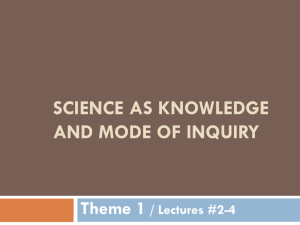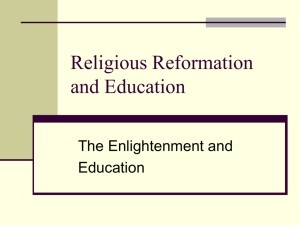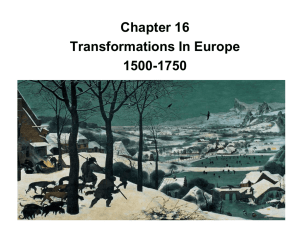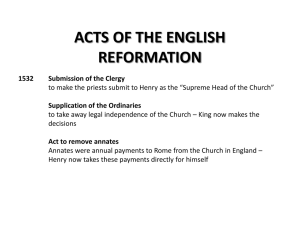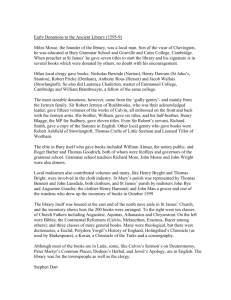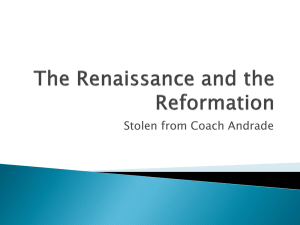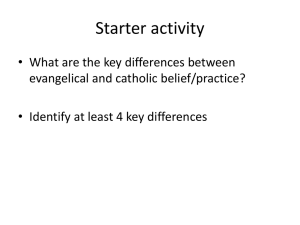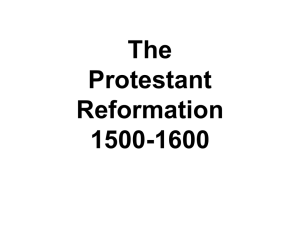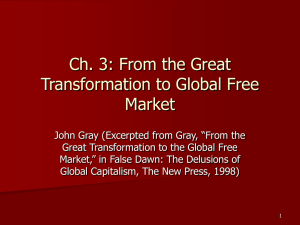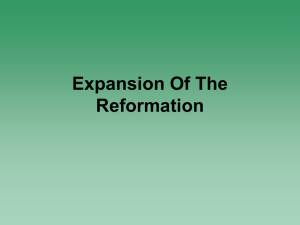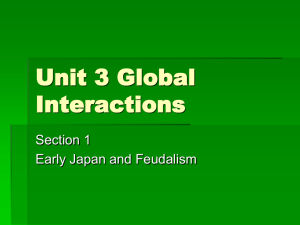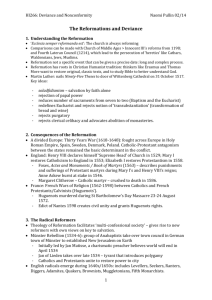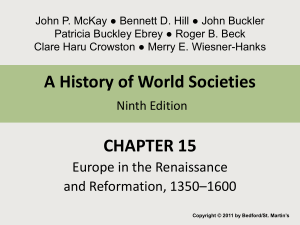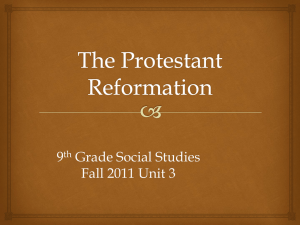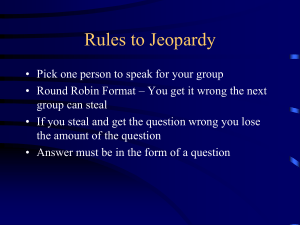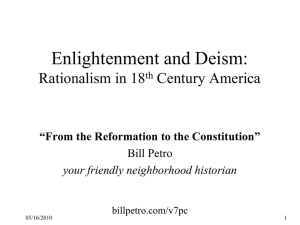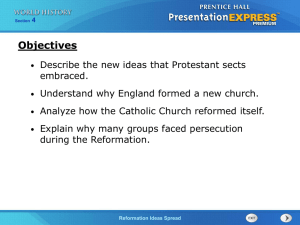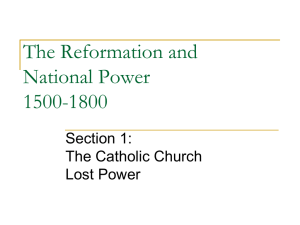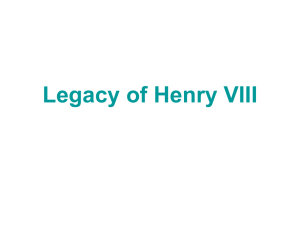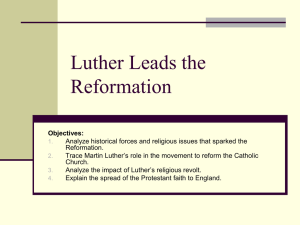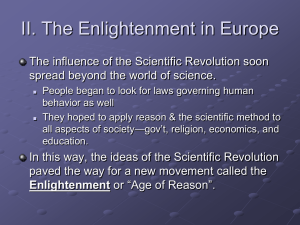The Reformation and The Enlightenment
advertisement
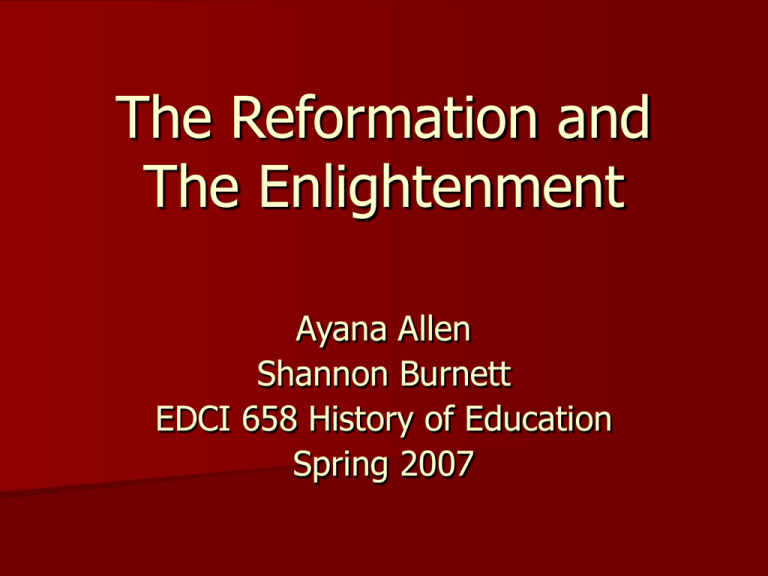
The Reformation and The Enlightenment Ayana Allen Shannon Burnett EDCI 658 History of Education Spring 2007 Map of Europe (c. 1560) Timeline of the Reformation 1517 – Luther’s “Ninety-Five Theses” 1534 – Henry VII “Acts of Supremacy” 1536 – Calvin’s Institute of the Christian Religion 1543 – Loyola’s Constitutions of the Society 1545 – Council of Trent 1555 – Peace of Augsburg Martin Luther (1483-1546) “Ninety-Five Theses” (1517) Activist “Justification by Faith” Universal Literacy Dual-Track Education John Calvin (1509-1564) Institutes of the Christian Religion (1536) Predestination Universal Literacy Dual-Track Education Education as Disciplinary Tool Henry VIII (1491-1547) Acts of Supremacy (1534) Head of the Anglican Church Statute of the Six Articles (1539) The Six Wives of Henry VIII Ignatius Loyola (1491-1556) Constitutions of the Society (1541) Society of Jesus (Jesuits) Ratio Studiorum Comenius (1592-1670) “Father of Modern Day Education” Pansophism Theories bridged Renaissance and The Enlightenment The Great Didactic (1628) The Enlightenment Age of Reason Progress Deism and the Enlightenment Laissez-Faire Economics Political Liberalism William Blake’s Isaac Newton (1795) Laissez-Faire Economics Francois Quesnay Free market economy Adam Smith Free trade, economic individualism “No Taxation without Representation” Adam Smith: Wealth of a Nation John Locke (1632-1704) Political Liberalism Jean Jacques Rousseau (1712-1778) Natural Education Emile (1762) Progressive Education Stages of human development Importance of Sensation The Reformation and The Enlightenment Rise of Universal Literacy Movement away from one central Church and authority Independence of Thought Scientific Inquiry Movement towards Child-Centered Education References Gutek, Gerald L. A History of the Western Educational Experience (Second Ed.) Long Grove, Illinois: Waveland Press, 1995. http://www.apuritansmind.com/ChristianWalk/McMahonComenius.htm http://artfiles.art.com/images/-/Ary-Scheffer/Portrait-of-John-Calvin1509-1564-Giclee-Print-C12062725.jpeg http://www,biocrawler.com/encyclopedia/The_Enlightment http://www.btinternet.com/~glynhughes/squashed/smith.jpg http://www.educ.msu.edu/homepages/laurence/reformation/Calvin/Calv http://www.everything2com./index.pl?node_id=925362 http://www.larmouth.demon.co.uk/sarah-jayne/wives/wives.html http://www.luc.edu/jesuit/ignatius.bio.html http://www.lumarius.org/renlit/tudorbio.htm www.personal.umich.edu/~sdarwall/locke.jpg http://www.research.ibm.com/image_apps/luthp.html http://www.royalty.nu/Europe/England/Tudor/HenryVIII.html http://www.wwnorton.com/college/history/ralph/resource/religion.htm Answers to Quiz 1. 2. 3. 4. 5. The Reformation began the dissolution of one centralized church and authority in Europe. It played a factor in universal literacy as individuals began to relate to Scripture. Martin’s “Ninety-Five Theses” were intended to call for reform in the Catholic Church. One of his appeals was a call to end the sale of indulgences. John Calvin believes children are “conceived in sin, and born of corruption.” Schools are meant to teach them discipline. Henry VIII secured the “Acts of Supremacy” and became the head of the Anglican Church so that he could divorce Catherine of Aragon and marry Anne Boleyn. His philosophies (child development, teaching for a child’s individual needs and making learning joyful) correlate with modern-day teaching principles. Answers to Quiz 6. The Deists were at the forefront of the movement to disestablish state churches and to separate the church and state. 7. Rousseau’s Emile recounted the story of the education of a boy from infancy to manhood? 8. Etienne Bonnot de Condillac asserted that sensation was the source of human knowledge. 9. Through natural education people could be restored to their original goodness and be given the stimulus and preparation to live scientifically, rationally, and progressively. 10. False: Laissez-Faire Economics advocated for a Free Market Economy.
